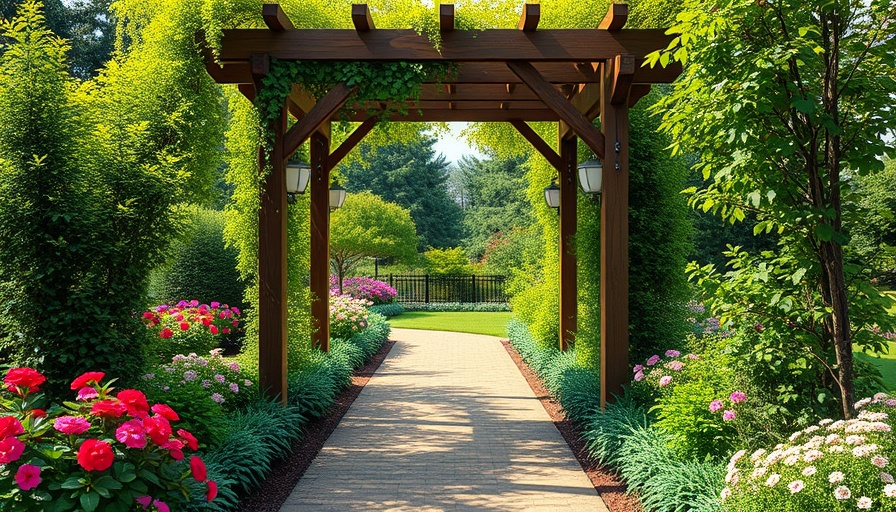
The Art of Creating a Spacious Sanctuary in Town Gardens
Every gardener desires a space that feels like a personal oasis, especially when urban living confines your garden to a compact area. Charlotte Rowe and Tomoko Kawauchi, acclaimed designers known for their stunning contemporary garden designs, reveal how thoughtful strategies can transform a modest garden into a serene retreat. Key design elements such as paths, levels, and strategic plant selections can elevate the overall experience, making gardens not just functional but transcendently beautiful.
Function at the Forefront: Design with Purpose
Before any shovel hits the soil, it's crucial to determine how your garden will serve your daily life. Will it be a bustling social hub for family gatherings or a tranquil spot for personal reflection? As Rowe emphasizes, "Decide on practical areas first." By mapping out how different sections of your garden will function, you can make design choices that enhance usability, such as designated areas for dining or play.
This fundamental shift in perspective transforms garden design. For instance, consider the flow: where will paths lead? What kind of seating accommodates large family dinners or quiet reading nooks? Thinking through these elements first helps in crafting a garden journey tailored to your lifestyle. Whether your garden includes a trampoline that doubles as a firepit space or cozy seating under hanging lights, every choice can enhance your garden’s ambiance.
Designing an Inviting Journey
Transforming a standard garden layout into an engaging adventure rests on creating a connecting journey throughout the space. Rowe notes that "If you can’t see the garden all at once, it will feel bigger." This approach involves strategically placing paths and designing seating that encourages exploration. With sightlines blocked and visual mysteries around every bend, your garden takes on an expansive feel even within limited dimensions.
Implementing straight lines for paths can maintain practical aesthetics while still allowing room for creativity through garden furniture and planting. Coupled with wide steps that can double as planting shelves, each design choice melds functionality with visual appeal, inviting guests to meander through your thoughtfully crafted garden.
Embrace and Enhance Natural Levels
Utilizing natural elevation instead of flattening garden terrain is a move often overlooked. Rowe and Kawauchi are proponents of keeping existing slopes, as adjusting them can eradicate character and light from your garden. Instead, they advise designing around natural contours—creating ramps, terraces, or paths that flow seamlessly with existing elevations.
This is not only visually appealing but also allows for a layered approach. Incorporating shallow and wide steps enhances safety and encourages relaxation in outdoor spaces, making them inviting and easily navigable. Such design choices resonate deeply with visitors and create a lasting impression.
Future Trends in Urban Gardening
As urban environments continue to grow denser, innovative garden designs will increasingly emphasize functionality without sacrificing beauty. Expect to see more urban gardens integrating sustainability through native plant selections, water-efficient designs, and versatile outdoor furniture that adapts to various activities—from dining to lounging.
Ultimately, as homeowners seek refuge from the bustling city life, the incorporation of biophilic designs—where nature is intertwined with daily living—is likely to become a focal point in garden planning. Imbuing spaces with elements that promote mental health and well-being will take center stage in urban gardening, encouraging deeper connections to our local flora and fauna.
Finding Your Personal Garden Aesthetic
To wrap up, the beauty of creating a town garden is not solely in its size but in how you engage with it. Reflecting on personal style through choices of plants, furniture, and pathways creates a distinctive character that envelops you in comfort. Remember, your garden reflects who you are—make it an expression of your vision and lifestyle.
Now that you've uncovered valuable insights on designing a spacious and serene town garden, it's time to channel your ideas into action. Consider your garden's purpose, plan the journeys, and embrace the unique levels of your space. Every element works together to form a personal oasis in the heart of the city.
 Add Row
Add Row  Add
Add 




Write A Comment